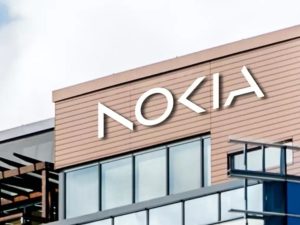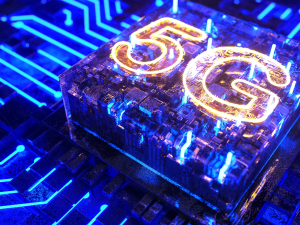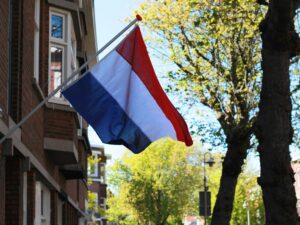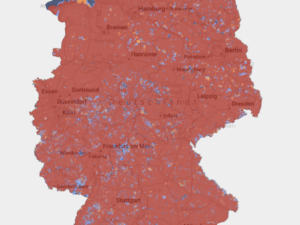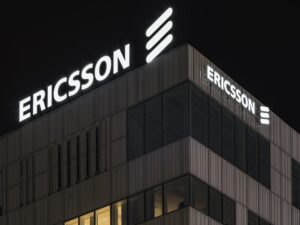USA, Japan, South Korea and China are the leading countries in terms of 5G readiness. A number of Gulf countries claim to have launched 5G mid-2018.

Almost all advanced countries have launched 5G, be launches impacted by the covid-19 or not. However, they keep on testing 5G, notably for vertical applications. The pandemic gave the opportunity to boost 5G trials in many industrial sectors (health, education, logistics, retail…).
USA
The USA has already assigned a wide quantity of spectrum for 5G, including mmwave spectrum. The four major players launched 5G in 2018, 2019 or in 2020. Additional spectrum will be assigned in December 2020.
China
In China, the three major players jointly launched 5G on November 1st, 2020. A fourth player Chain Broadcasting Network was awarded a licence in June 2019 but has not launched yet. The subscriber uptake is impressive. The 100 million mark has been overtaken in June 2020.
Japan
The three major players launched 5G in March 2020. Rakuten Mobile delayed its 5G launch.
South Korea
All South Korean players launched 5G in April 2019. Since then, the subscriber uptake is robust: the 7 million mark has been overtaken in June 2020.
Gulf Countries
Qatar and UAE both claim to be the world firsts to have launched 5G. Without any 5G device available, it appears to be a 5G infrastructure demonstrator rather than a full commercial launch.
The four main players have already launched 5G.
Spectrum for 5G was identified in July 2016 by the FCC (10.85 GHz in the 28 GHz (27.5-28.35 GHz), 37 GHz (37-38.6 GHz) and 39 GHz (38.6-40 GHz) bands, and in an unlicensed band at 64-71 GHz). 24 and 28 GHz spectrum was auctioned in the first half 2019. The FCC auctioned the upper bands in early 2020.
A specific fund for 5G was opened in 2016.
5G spectrum
The FCC voted in 2016 for the release and development of nearly 11 GHz of high-frequency spectrum intended to be used for fixed and mobile broadband bandwidth uses: 3.85 GHz to be assigned under licences in the bands 27.5-28.35 GHz and 37-40 GHz and 7 GHz, under general authorization, in the band 64-71 GHz.
- July 2016: the FCC made available a total of 10.85 GHz in the 28 GHz (27.5-28.35 GHz), 37 GHz (37-38.6 GHz) and 39 GHz (38.6-40 GHz) bands, and in an unlicenced band at 64-71
- November 2017: the FCC made available an additional 1700 MHz of high band spectrum for flexible terrestrial wireless use in the 24 GHz (24.25-24.45/24.74-25.25 GHz) and 47 GHz (47.2-48.2 GHz) bands.
- March 2018: the FCC announced that it would like to held auctions of the 28 GHz and 24 GHz bands by the end of the year (November 2018 for the 28 GHz auction).
- June 2018: the FCC voted to proceed with making the upper 26 GHz (25.25–27.5 GHz) and 42 GHz (42–42.5 GHz) bands available for 5G services, while examining further aspects of the bands already in the 5G pipeline. The auction for the 28 GHz spectrum (27.5-28.35 GHz) and 24 GHz spectrum (24.25-24.45-24.75-25.25 GHz) is scheduled to begin on November 14, 2018.
- July 2018: the FCC is considering options for up to 500 MHz of spectrum in the 3.7-4.2 GHz frequencies. Satellite companies currently use the frequencies.
- 28 GHz auctions results:
- The FCC’s auction of residual 28 GHz16 (27.5-28.35 GHz) frequencies began on November 14th, 2018. The auction closed on January 24th, 2019 when a round ended without bids placed.
- According to the FCC Auction Bidding System Public Reporting System (PRS), winning bids reached 702.6 MUSD on Jan. 24th, 2019, after 38 days of bidding and 176 rounds completed. The residual licences were sold on a county basis. Two blocks of 425 MHz were available.
- 24 GHz spectrum (24.25–24.45 GHz + 24.75–25.25 GHz) auctions started in March 2019 and ended on May 28, 2019. 24 GHz frequencies were auctioned in 100 MHz blocks and sold by partial economic areas (PEAs, PEAs are larger than counties). In total, the auction raised 2.02 billion USD.
- The Federal Communications Commission announced the conclusion of Auction 103 in March 2020. This is its third auction of 5G suitable millimetre wave spectrum to date. The process started in December 2019 and involved frequencies in the upper 37GHz, 39GHz, and 47GHz bands, offering a total of 3,400 MHz of spectrum. The auction bid reached 7.6 billion USD (6.9 billion EUR). The price per MHz per capita for 10 years is 0.06 cEUR. The amount is much inferior to the price of past auctions in the 24 and 28 GHz bands.
Verizon spent 1.6 billion USD (1.45 billion EUR) on 4,490 licenses in 411 areas. AT&T dropped nearly 1.2 billion USD (1.09 billion EUR) on 3,267 licenses in 411 areas. T-Mobile spent a total of 873 million USD (793 million EUR) in the auction and won 2,384 spectrum licenses covering 399 areas. Sprint bid almost 114 million USD (103 million EUR) on 127 licenses in 38 areas.
- The FCC is planning two more spectrum auctions in They include a CBRS 3.5GHz auction that is planned to begin in June 2020 and another C-band auction that is expected to begin in December 2020.
5G trials
Verizon
Since 2017, Verizon has been testing mm-wave 5G services in 11 cities (in Ann Arbor, Atlanta, Bernardsville, Brockton, Dallas, Denver, Houston, Miami, Sacramento, Seattle, and Washington, DC.). Verizon demonstrated a video 5G call at the 2018 Super Bowl and a NR data lab transmission with Nokia and Qualcomm in February 2018. In June 2018, Verizon tested two-way data transmission and multi-carrier aggregation and very high speeds outdoors. In August 2018, Verizon succeeded in transmitting a 5G signal to a moving vehicle.
In August 2018, Verizon and Nokia achieved a transmission of 5G NR signal to a receiver situated in a moving vehicle using spectrum in the 28 GHz band, in a trial carried out in New Jersey. In September 2018, Verizon, in partnership with Nokia, completed the transmission of a 5G mobile signal to a test van in Washington. The test was carried out with Verizon’s mm-wave spectrum and 5G network core, along with Nokia’s 5G radio equipment.
In September 2018, Verizon successfully transmitted a 5G signal on a commercial 5G NR network in Washington DC and Minneapolis on prototype devices.
AT&T
In November 2018, AT&T showcased its first mobile 5G device using mm-wave spectrum as well as the ‘first mm-wave mobile 5G browsing session’ in Waco, Texas. The described device is a NETGEAR Nighthawk based on Qualcomm Snapdragon X50 5G modem.
AT&T also achieved tests of wireless 5G data transfer over mm-wave spectrum bands, via a mobile form factor device. The trial was carried out in Waco, Texas.
Sprint
The company started trials in 2017 in Atlanta, Chicago, Dallas, Houston, Los Angeles, and Washington DC. In June 2016, Sprint demonstrated a 5G trial using 73 GHz frequencies.
In May 2017 Sprint, SoftBank and vendor Qualcomm Technologies announced an agreement to collaborate on the development of the 3GPP 5G New Radio (NR) standard for 2.5GHz spectrum.
T-Mobile
The operator completed with Nokia in June 2018, ‘the nation’s first bi-directional over-the-air 5G data session on a 3GPP-compliant 5G New Radio system’. It conducted with a user equipment simulator and Nokia’s 3GPP-compliant high-capacity 5G solution in the 28GHz frequency.
AT&T demonstrated with Nokia in November 2018, a 5G data transmission using its 600 MHz spectrum.
In January 2019, the company teamed up with Ericsson and Intel in Las Vegas to make a 5G data call and video call on a live 600MHz network. T-Mobile also accomplished a tri-band 5G video call with three users on different spectrum bands: 600MHz, 28GHz and 39GHz.
In December 2018, the Chinese government allocated spectrum to players for 5G national trials until June 2020. China Telecom and China Unicom received 100 MHz of spectrum in 3.5 GHz frequencies (3.4-3.5 GHz for China Telecom, 3.5-3.6 GHz for China Unicom). China Mobile obtained 260 MHz in 2.6 GHz (2515-2675 MHz) and 4.8 GHz (4800-4900 MHz) frequencies. Under the arrangement, China Telecom and China Unicom will stop using 2.6 GHz frequencies by end March 2019.
China Mobile
China Mobile started to conduct 5G trials during the second half of 2016. China Mobile plans to start offering 5G services in September 2019 in 40 cities, which is a year earlier than originally planned (2020). China Mobile was issued a 5G licence by the Chinese Government in early June 2019.
In 2018, China Mobile announced large-scale trials in five cities including Shanghai and Hangzhou by the third quarter of 2018 with about 500 base stations (100 first base stations by end June 2018). Trials will be extended to 20 cities early 2019 with another 500 base stations, to test out business applications. The trial network will use 3.5 GHz spectrum and some of the 4.9 GHz band.
In November 2018, China Mobile presented its ‘5G Terminal Pioneer Programme’, through which it plans to launch 5G-compatible devices by 2019. The company announced that first 5G devices will be launched by H1 2019. Under the government’s current plans for 5G development, the new technology will see pre-commercial use in 2019 while full commercial launch will occur by 2020.
In February 2019, China Mobile announced its plans to deploy 5G at scale in four cities this year in non- standalone (NSA) mode. The operator is collaborating on developing equipment running on the 2.6 GHz and 4.9 GHz bands to increase capacity and reduce the power consumption of 5G base stations.
China Unicom
China Unicom announced in August 2018 that 300 5G base stations will be implemented in Beijing this year, via its ‘Next 5G’ initiative. China Unicom has been trialling 5G in 600 labs of 16 cities including Beijing, Tianjin, Qingdao, Hangzhou, Nanjing, Wuhan, Guiyang, Chengdu, Shenzhen, Fuzhou, Zhengzhou, and Shenyang. In 2019, application experiments and large-scale trials are scheduled.
In January 2019, China Unicom announced it completed a 5G call with a ZTE 5G prototype smartphone in a commercial field trial in Shenzhen.
China Telecom
China Telecom started testing 5G in six cities including Xiong’an, Shenzhen, Shanghai, Suzhou, Chengdu and Lanzhou in a view to test 5G in 12 cities in the end.
In South Korea, the Korean Government (Ministry of Science, ICT and Future Planning) and the public- private partnership, 5G Forum, itself established in Seoul on 30 May 2013, defined the 5G mobile strategy as early as January 2014. For that purpose, the Government allocated 1.5 billion USD.
The program of the 5G Forum (www.5gforum.org) runs over the seven-year period of 2014-2020 with a joint investment of 1.6 trillion KRW by both the Government and the private sector. Some 26 companies/institutions are part of the project comprised of private companies (operators, equipment vendors), research institutes and universities.
The South Korean carriers agreed mid-2018 to build single 5G network to save money and time. 5G services were jointly launched by the three MNOs on April 3rd, 2019.
NTT DoCoMo
As early as 2017, NTT DoCoMo executives indicated that the Tokyo Summer Olympics were a target for 5G launch. NTT DoCoMo sticks to that target date; it could however pre-launch 5G services in Autumn 2019.
NTT DoCoMo carried out a number of 5G trials with multiple vendors. For example, they cooperated with Tobu Railway to trial a 5G system at Tokyo Skytree Town using 28 GHz spectrum in March 2018. Earlier in November 2016, they carried out a large-scale field trial using 200 MHz of spectrum in the 4.5 GHz band in Yokohama, Japan. This trial, aimed at testing Ultra Reliable and Low Latency Communications (URLLC), resulted in network speeds up to 11.29 Gbps total and less than half-a- millisecond latency. NTT DoCoMo also completed 5G integrated access backhaul trials using the 39 GHz frequencies. With Nokia, NTT DoCoMo tested 5G on the 90 GHz band.
In May 2018, NTT DoCoMo achieved a 5G field trial at 28 GHz, involving a 5G base station and a car travelling at around 293 km/h. In November 2018, NTT DoCoMo and Mitsubishi Electric achieved peak data speeds of up to 27 Gbps during 5G trials, using a single mobile terminal and 500 MHz of spectrum in the 28 GHz band.
NTT DoCoMo, in partnership with Metawave Corp, demonstrated 5G technology in December 2018 using the 28 GHz band. The trial took place in Koto-ku, Tokyo and achieved data transmission speeds of 560 Mbps with Metawave’s meta-structures reflect-array in place, compared to 60 Mbps with no reflector.
In December 2018, NTT DoCoMo and Mitsubishi ran 5G trials in Kanagawa. Tests used a single terminal and 500 MHz of 28 GHz spectrum. By using a 16-beam spatial multiplexing in LOS (line of Sight) conditions with massive MIMO antennas, tests hit a peak speed of 27 Gbps at 10 metres. At 100 metres, tests achieved 25 Gbps.
Softbank
SoftBank has been performing many 5G trials with Huawei or Ericsson since 2017, notably using 4.5 GHz frequencies. SoftBank is working with Huawei to demonstrate 5G. A demonstration included real- time UHD video transmission (throughput of over 800 Mbps) using ultra-high throughput, remote control of a robotic arm and ultra-low latency transmission as well as remote rendering via a GPU server using edge computing. With ZTE, Softbank achieved DL speeds of 956 Mbps in Nagasaki in October 2017.
KDDI
In December 2017, KDDI and Samsung completed a successful 5G demo on a train moving at over 100 km/h. The distance between two stations was approximately 1.5 km. Companies achieved a successful DL and UL handover as well as a peak speed of 1.7 Gbps.
KDDI has also performed 5G trials, mainly with Ericsson and Samsung Electronics. Between September 2017 and March 2018, KDDI and Ericsson tested a PoC in the 4.5 GHz frequency band in a many cities across Japan.
In November 2018, KDDI outlined plans to start offering 5G services in selected areas by 2019, with full-scale development coming in 2020. It reportedly aims to implement its 5G core in 2021, planning to launch various services using network slicing.
Rakuten Mobile
Rakuten Mobile, the fourth mobile operator in Japan, plan to launch its 4G network April 2020. The operator announced a new 4G mobile carrier service plan will be available for 2,980 JPY (25 EUR) per month that will offer unlimited data within Rakuten network areas and 2 GB per month when subscribers ride on partner networks. The monthly price tag is roughly half the cost of service plans from competitors NTT Docomo, KDDI and Softbank. The company also announced a launch campaign offering 3 million subscribers the first full year of service free of monthly fees.
The operator launched a 4G fully virtualized cloud-native mobile network in April 2020. The architecture enables the operator to offer aggressive prices and lays the groundwork for the low cost and speedy implementation of 5G announced for the months to come.
The Indian government is strongly backing 5G deployment. Indian authorities established a 5G forum with a budget of approximately 76 million USD dedicated to 5G research and development.
The government launched two strategic initiatives to address these challenges: India’s Smart Cities Mission and Digital India. 5G will be central in achieving these government-backed initiatives that focus on easing the stress of urban population growth and closing the digital divide among the citizens from different social backgrounds.
India has significant infrastructure challenges that will limit 5G deployment, such as the lack of a robust network to connect cellular sub-networks to a core network. The majority of mobile subscriptions are still 2G, and MNOs have already begun considering leapfrogging from 2G/3G directly to 5G.
A likely target for 5G launch is 2022.
The Department of Telecom (DoT) is harmonizing spectrum in the 3.3-3.6 GHz band and 26 GHz band, along with the 71-76 GHz, the 81-86 GHz and the 57-64 GHz frequencies as 5G candidate bands.
The DoT ordered operators to vacate spectrum in the 3.3-3.4 GHz range by the end of September 2018. In August 2018, the government and the regulator TRAI suggested a reserve price of 30% of 1800 MHz FDD band for the 3.3-3.6 GHz spectrum i.e. 985 INR per MHz (12.4 EUR) considering the 1800 MHz reserve price of 3285 INR. Mid-frequencies should be put for sale in 20 MHz blocks with a spectrum cap of 100 MHz per bidder.
India’s 5G auction, which was postponed in 2019 and was scheduled for April 2020, was again postponed by the authorities due to the operator’s financial difficulties to pay licensing fees and other penalties.
Ooredoo announced it has launched its 5G commercial network in July 2018. Considering 5G mobile devices are not ready yet, it states it is waiting for manufacturers to produce 5G capable devices.
Du announced the rollout in 2018 of a limited service of 5G. Du’s announcement follows rival Etisalat’s plans to roll out 5G commercial fixed devices in September 2018.
The SA Kingdom has set up a national 5G task force to prepare the foundations for a large scale 5G rollout before the end of 2019,
Since May 2017, CITC (Communications and Information Technology Commission) awarded 160 MHz of additional IMT spectrum in 700 MHz, 800 MHz, and 1800 MHz bands to mobile operators Mobily, STC and Zain.
CITC issued testing licenses to all three operators in May 2018. The 3.6-3.8 GHz licenses allow the MNOs to test 5G with 100 MHz of spectrum between June 2018 and year-end 2019.


